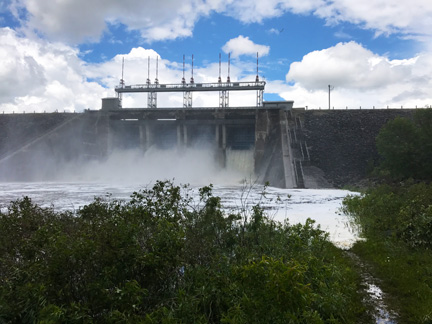We operate a sophisticated series of rainfall and river flow gauges throughout the watershed. These gauges are designed to alert staff on-duty 24-hours a day in the event that river flows increase quickly, or heavy rainfall occurs.
As a result of the heavy rainfall that occurred on June 23, the following actions occurred.
Summary of actions
| Time | Action |
| 3:13a.m. |
|
| 4:17a.m. |
|
| 5:40a.m. |
|
| 9:15a.m. |
|
A series of seven additional flood warning messages were subsequently issued between June 23 and June 27, 2017. These flood messages provided actions and updates to municipal flood coordinators, emergency services and municipal staff as the event unfolded.
The same messages were also immediately posted to our website and social media feeds, emailed directly to newsroom subscribers, and sent out to all local media outlets.


